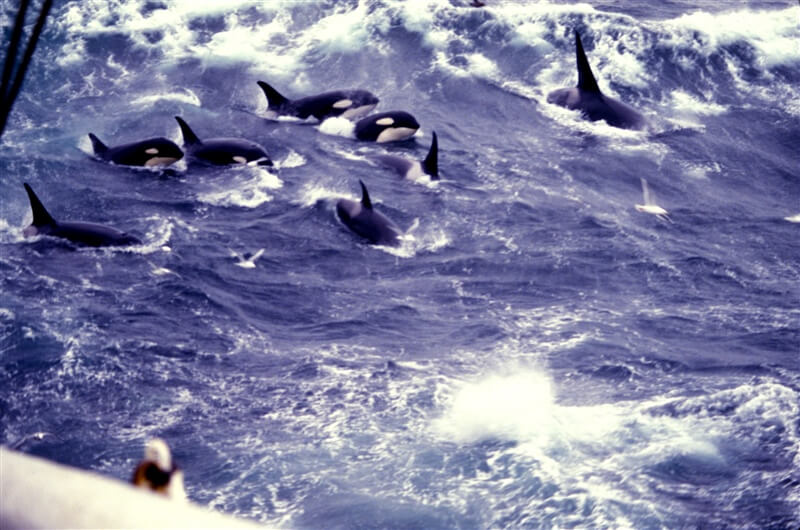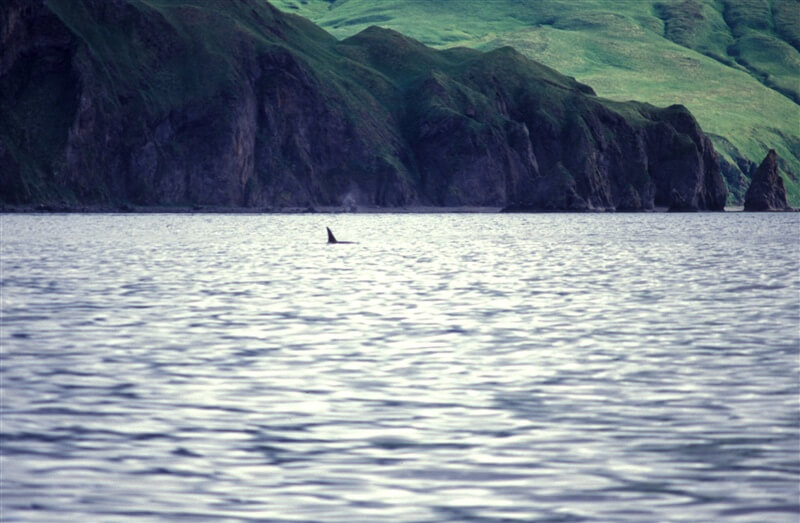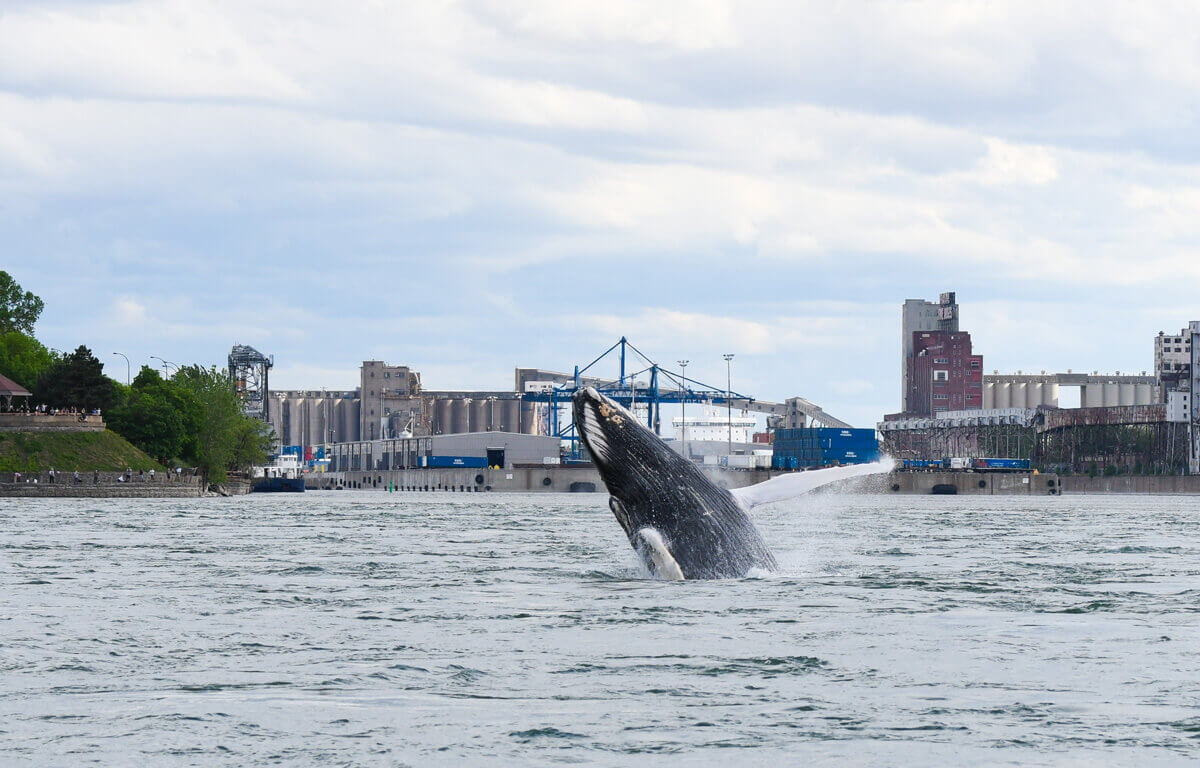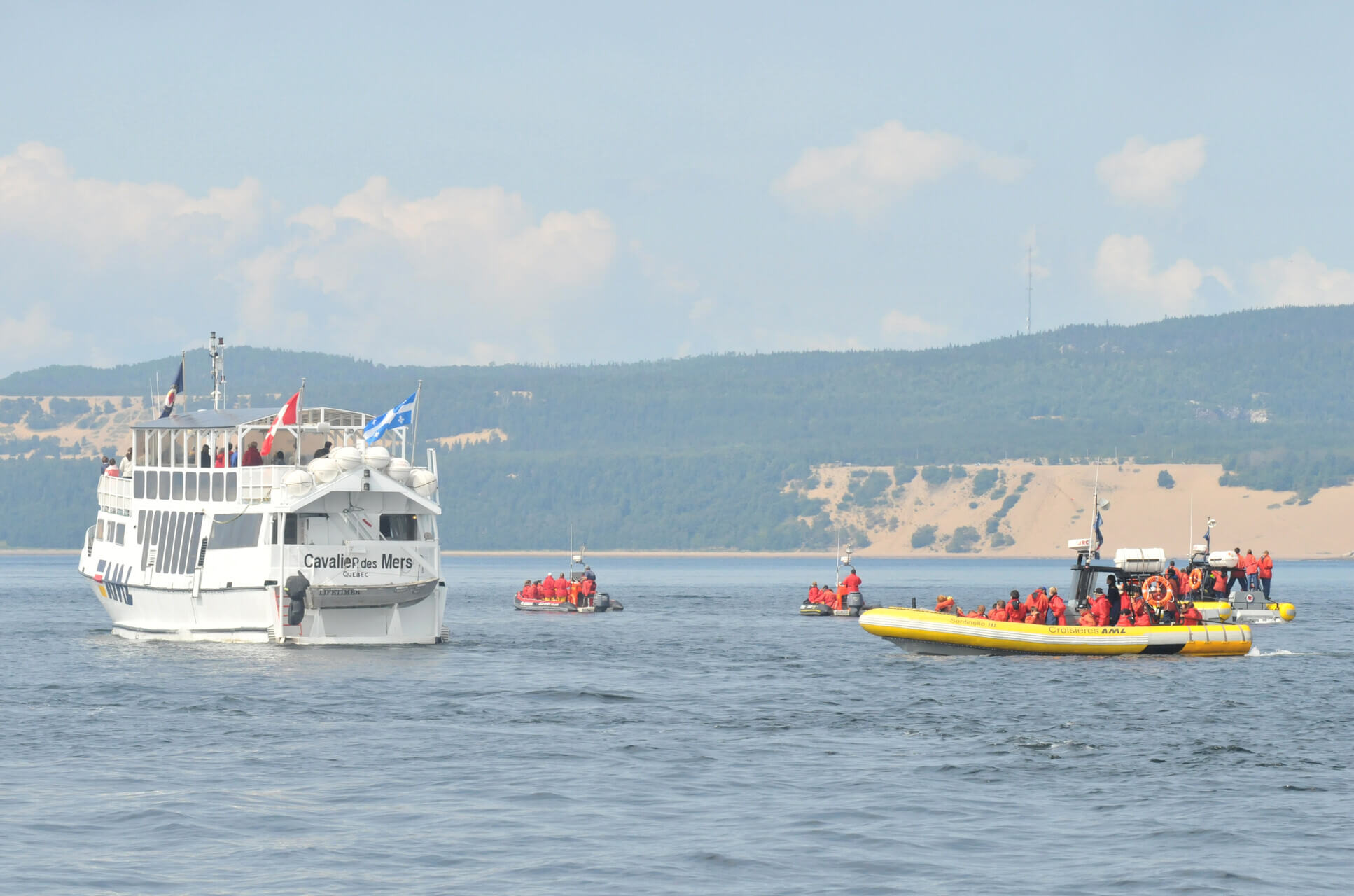Did you know that a sound wave can travel through water at a speed of 5,400 kilometres per hour? In the 1990s, a team of scientists sent sound waves into the waters of the southern Indian Ocean to determine how far they could travel… and managed to pick them up off the coast of Washington state! The sound had travelled the entire width of the Pacific. Rather impressive, isn’t it?
Undeniably, the animal that best embodies the power of underwater sound is the blue whale. In favourable oceanographic conditions, its song can be heard by other whales up to 1,600 km away! As for the fin whale, its call can travel up to 250 km at the surface and 6,000 km in deeper waters. The call of the humpback can travel up to 6,400 km. In their dark and hostile environments, whales have developed exceptional hearing and boast some of the most varied vocal repertoires on the planet: pulses, moans, sounds, ultrasound… you name it!
Residents of Varennes will remember June 7, 2020 for a long time. Indeed, it’s not every day that we have the chance to observe a humpback whale breach multiple times just a few metres from shore, far from the species’ usual range. The combination of these factors made this occurrence completely surreal. Unfortunately, the whale perished two days later, likely as a result of a collision with a ship. But might it have been possible to design an intervention to guide this vagrant toward the estuary using sound signals emitted by underwater loudspeakers? Research on this subject is still in its infancy, but two occurrences of this type of intervention have been observed with toothed whales, whose sound perception mechanism is better understood than that of their baleen cousins.
According to Jeanne Mérindol, a master’s student in oceanography at the Institute of Ocean Sciences in Rimouski (ISMER), this technique has already been tested on a few occasions. It consists of emitting, from a boat, underwater sounds that match the cetacean’s communication frequencies in an effort to guide the animal to an area where it would be less vulnerable. However, one thing is clear: trying to force a multi-tonne animal to follow a path against its will is very tricky! For baleen whales, the chances of a successful rescue using this type of intervention are quite slim. Indeed, these animals do not seem to rely on sound to the same degree as some of the more social and vocal marine mammals such as killer whales or belugas.
Killer whales duped but alive!
The first successful rescue operation took place in Norway in 2017. A pod of nine killer whales stranded in a bay were rescued from possible death. Specialists played the calls of actively feeding Norwegian killer whales outside the bay to attract the cetaceans to open waters farther away from shore. As soon as the sound was emitted, the animals changed their trajectories, switching from slow travel to active porpoising toward the source of the noise! Considering the nearly instantaneous reaction of these marine mammals, the operation was considered a success.
A technique that has its flaws
This approach was also used in a similar case, but ended in failure. The event occurred in the Seine in May 2022: a female killer whale had gone astray in this French river, and to help the animal find its way back to sea, scientists emitted ultrasound, much in the same way as the aforementioned case in Norway. Unfortunately, the animal’s reactions to the various sound emissions were rather inconsistent and included avoidance responses. The production of these stimuli, which were intended to attract the killer whale to safety, did not bear fruit. Sadly, its body was discovered a few days later. Why didn’t the cetacean respond favourably to the calls in this particular case? Experts argue that the female was in a generally poor state of health and may have been suffering from a fungal infection, in addition to being undernourished. The animal’s degraded health could explain its lack of response to the sounds.
Baleen whales vs. toothed whales
So what happened in the Port of Montréal? This case involved a humpback whale. As mentioned above, baleen whales (mysticetes) and toothed whales (odontocetes) do not seem to use sounds or perceive their surroundings in the same way. This difference notably stems from the odontocetes’ echolocation capacity, which, through high-frequency clicks, allows them to locate prey and communicate more effectively in their marine environment. As for baleen whales, they produce rather low-frequency sounds to communicate and orient themselves. Their vocalizations are also relatively slow and infrequent, making these whales poorer candidates for interventions that involve the emission of underwater signals.
Generally speaking, the vocal behaviours and sound reception mechanisms of baleen whales aresomewhat less well understood than is the case for species that use echolocation. The ears of cetaceans, unlike those of humans, are isolated from the skull and held in place by ligaments, which allows for reduced vibrations and sharper hearing. In toothed whales, it is the lower mandible that seems to act as a sound receiver. Hearing in whales, however, remains poorly understood.
In closing, it should be recalled that noise pollution interferes with cetaceans’ ability to communicate: the noise of ships drowns out their “voices” and is a major stress factor. Here in Quebec, more than 5,000 cargo ships transit the St. Lawrence Estuary every year. Added to this are some 13,000 whale-watching excursions every summer. This maritime jungle represents a highly energy-intensive acoustic environment for our giants of the seas. In a context where the conditions for redirecting a whale to a safer place are otherwise favourable, this excessive noise could represent an obstacle to a successful rescue. Unless the situation is the result of human activity, it is often best to “let nature take its course” and trust the whales’ instinct for survival!









